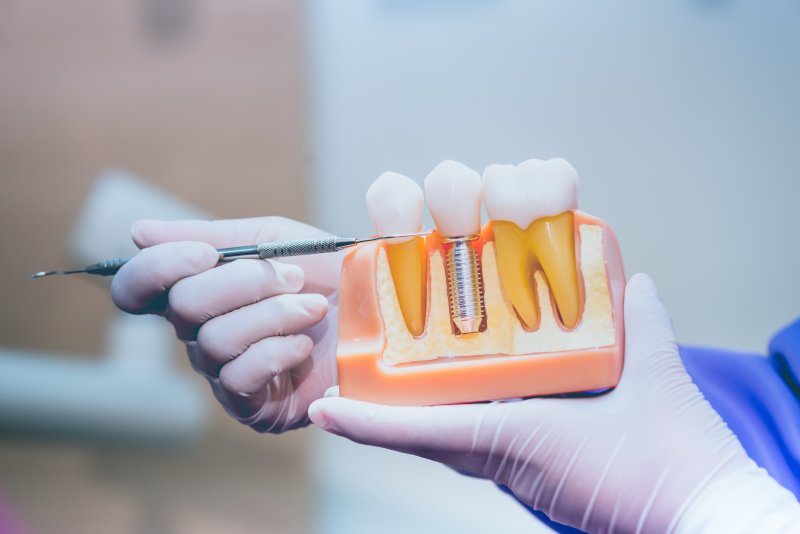
What are the odds you’ll need additional surgery before you can have dental implants placed? One study in Maxillofacial Plastic and Reconstructive Surgery found that more than half of patients need bone grafts before implants are installed. Is this procedure necessary in your case, or will you be able to enjoy dental implants right away? Read on to learn why your oral surgeon might recommend bone grafting as a necessary first step.
How Do Dental Implants Work?
First, it’s important to understand what happens when implants are placed in your jaw. The key is a natural process called osseointegration, which is when the bone in your jaw gradually fuses with the titanium implant post. This bond helps your new teeth stay stable in your mouth, letting you chew a wide variety of foods without having to worry about your pearly whites slipping. Also, the implants provide the stimulation to the jaw that usually comes from the roots of your natural teeth; this stimulation is important for preventing the bone degeneration that normally occurs when you’ve lost a tooth.
Why Would You Need Bone Grafts Before Getting Dental Implants?
For osseointegration to take place, your jawbone needs to have enough density to support and then join with the dental implant. Unfortunately, if it has been a while since you lost your tooth, your jaw has probably already lost some of its density. In these cases, bone grafting can be used to reverse bone loss so that the implant procedure can be performed safely and successfully.
What Happens During Bone Grafting?
The first step is to figure out where the material used for the graft will come from. It’s common to use bone tissue from another part of your body (such as the hip or a different part of the jaw), but other times it might come from a human or animal donor. In certain cases, synthetic materials are used instead.
The selected material will be placed – or grafted – into the degenerated or damaged areas of the jaw. After that, you’ll need to wait while the graft stimulates growth until the bone is dense enough to support a stable, secure dental implant. This can take several months depending on the patient; your oral surgeon will wait to schedule the implant surgery until your mouth is ready.
Is Bone Grafting Right for Me?
Not every patient needs bone grafting. For example, if you’re having a tooth extracted, the implant can usually be placed right away before your jaw suffers from any bone loss. You’ll need to talk with your oral surgeon to figure out what needs to happen during the process. If you find out that you do need bone grafting, remember that it’s just a necessary step on the road to a healthy, complete smile!
About the Author
Dr. Jeff Lee completed a four-year residency in Oral and Maxillofacial Surgery at the Ohio State University Wexner Medical Center. Over the course of his career, he has received numerous awards and has assisted with numerous research projects related to implant dentistry. He is an expert in surgical implant placement and can perform bone grafts and sinus lifts when necessary. To schedule an appointment at his Cambridge practice, Muskingum Valley Oral Surgery, visit his website or call (740) 432-8768.
